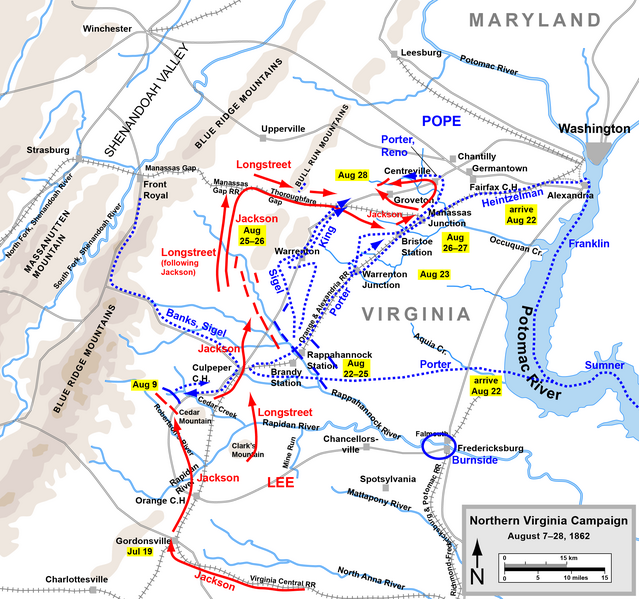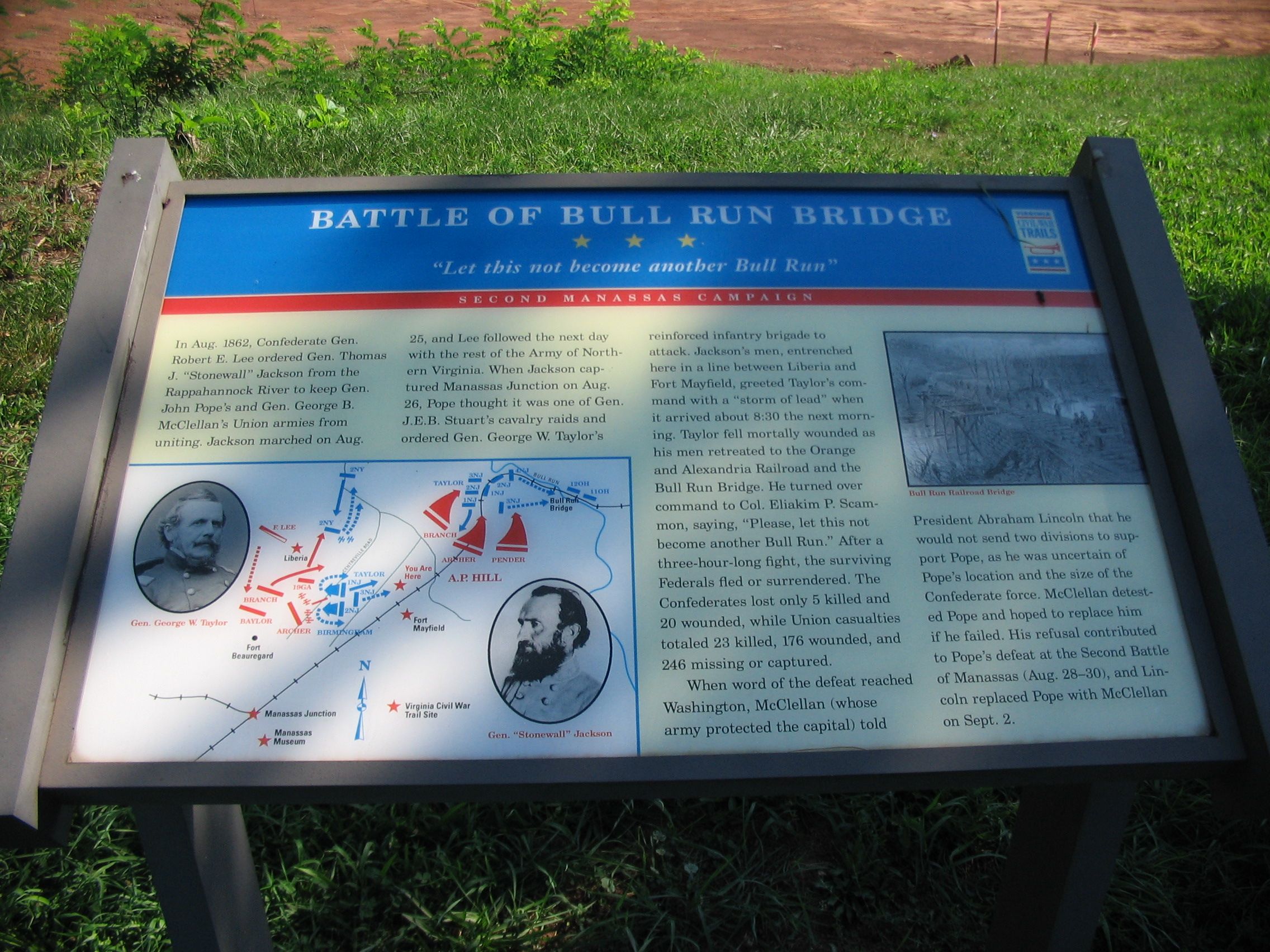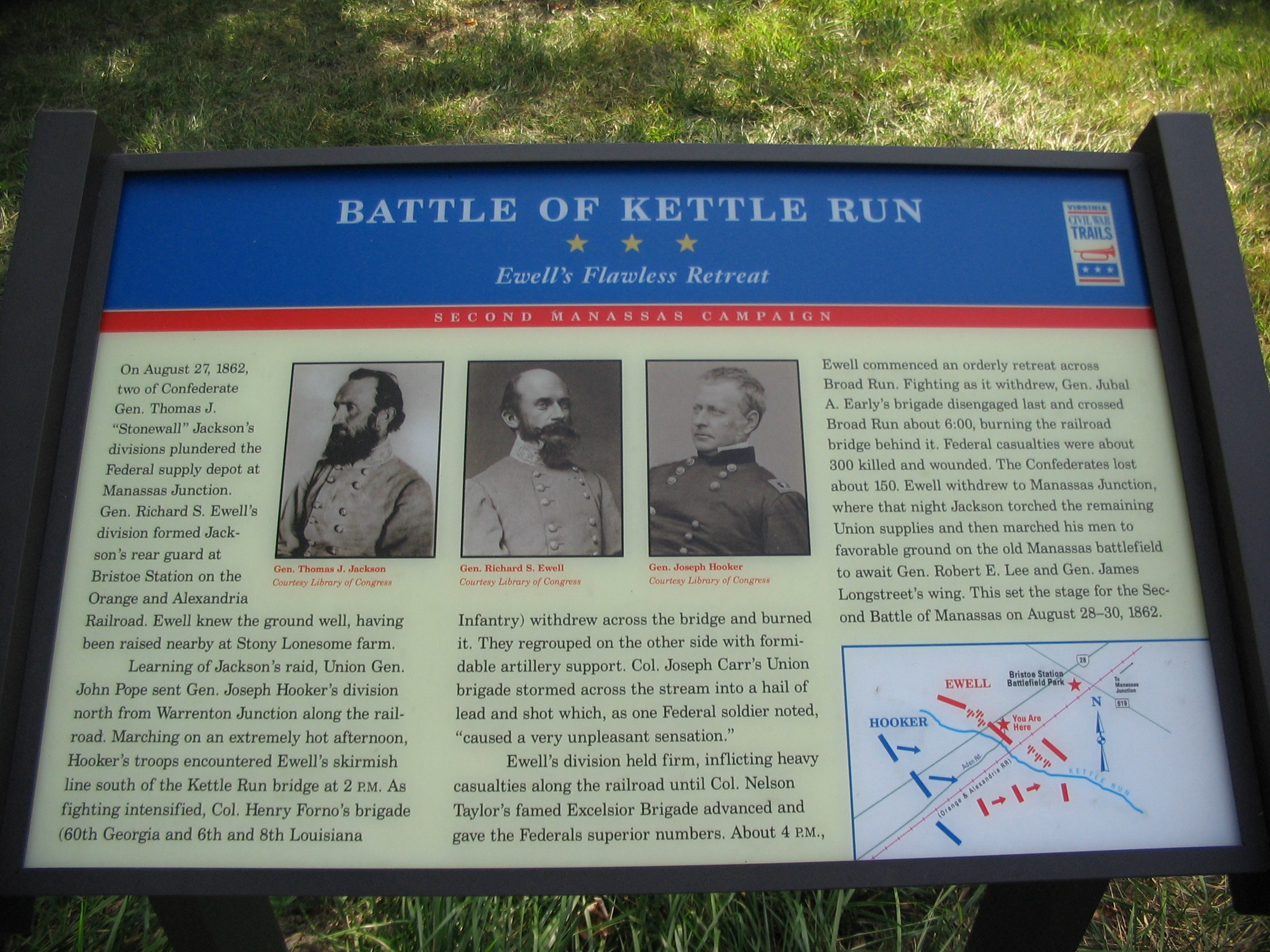After the fight at Cedar Mountain weeks before, the two main armies in Northern Virginia, US General John Pope's Army of Virginia and CS General Robert E. Lee's Army of Northern Virginia sat facing one another along the Rappahannock River, with Pope on the Fauquier County (North/East) bank, and Lee on the Culpeper County (South/West) side.
Lee, however, needed to act quickly. His force consisted of around 50,000 men, while Pope has a comparable number -- but as McClellan evacuated his US Army of the Potomac from the banks of the James River and added corps to Pope's force, Lee's window of opportunity for suppressing Pope was closing.
Robert E. Lee has already shown a degree of boldness by leaving Richmond virtually defenseless in the face of George B. McClellan's massive, but defeated, force. Lee would be bold once more, this time counting on his "right arm," CS General Thomas "Stonewall" Jackson. Lee would send Jackson on a march around the right flank of the Union Army of Virginia -- splitting his force in half in the face of his enemy.

Map of the Northern Virginia Campaign of Second Manassas -- including Jackson's flank march to Manassas. [Map by Hal Jespersen, www.cwmaps.com]
Stonewall Jackson, with about 25,000 men would begin their flank march on the morning on 25 August, reaching Marshall, Virginia that evening. The next day, 26 August, they would march through Thoroughfare Gap and strike the Orange and Alexandria Railroad at Bristow Station late that night -- Jackson and his men had covered 55 miles in 34 hours, arriving in the rear of the Union army and right on their primary supply line of the O&A railroad.
Dawn of 27 August, today, in 1862AD, Stonewall Jackson's Corps seized the supply depots and Manassas Junction just a few miles up the railroad from Bristow. They also had to prepare for twin fights that day.

Sign marking the site of the Battle of Bull Run Bridge. Click here for the full text and location: http://www.hmdb.org/Marker.asp?Marker=13287
US General Henry Halleck in Washington, DC, received word of the railroad line being cut, and, assuming this a minor cavalry raid, dispatched a brigade of New Jersey boys under US General George Taylor to chace them away and retake the Junction. This force found not cavalry, but Jackson's Confederate infantry Corps at Manassas on that 27 August, and at the Battle of Bull Run Bridge, his force was devastated.

Sign marking the site of the Battle of Kettle Run. For the full text and location, click here: http://www.hmdb.org/marker.asp?marker=10745
Meanwhile, that afternoon and evening, Stonewall Jackson's rearguard, a Division under Prince William County local CS General Richard Ewell, executed a flawless fighting retreat, starting around Kettle Run and moving north through Bristow and the area of Broad Run. Though pushed by the Union Division of Joseph Hooker, Ewell managed to delay the Union advance and give the rest of Jackson's Corps time to withdraw to Stony Ridge, along an unfinished railroad grade north of Manassas. This fighting retreat is now known as the Battle of Kettle Run.
Here is the NPS account of the Battles of Bull Run Bridge and of Kettle Run: http://www.cr.nps.gov/hps/abpp/battles/va024.htm
It is on Stony Ridge that we will resume our narrative tomorrow.
Live well!
No comments:
Post a Comment